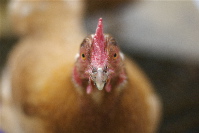10 Things Not To Do In Business PowerPoint Presentation

I haven’t mentioned PowerPoint or presenting in a while, potentially because I am increasingly speaking without the use of slides these days. However, a recent trade show visit put it firmly back on my radar, as I took to the stage and also caught some other speakers. Needless to say, the trip spawned a top 10 things not to do in PowerPoint list:
1. The First Epistle of Paul – on a single slide.
When preparing a presentation it can be very tempting to put lots of writing onto a slide. Then you shrink the font to add some more. Rinse and repeat. When you put up your slide the audience will read it, even if it is like a piece of microfiche (the technology libraries used to use to cram huge amounts of information into a tiny space).
When they are reading all that text on the PowerPoint slide, they aren’t listening to you. You can’t read one thing and listen to another. If you don’t believe me, try it. Still there? If you want the audience to listen, then don’t give them too much to read – just enough to remind them what you were talking about.
2. Dear People, Let Me Read to You From My Extensive Notes.
Don’t read from notes, other than glancing down to quickly remind yourself of where you are and what is next. In an ideal world, avoid notes. It makes for a much better presentation. Think of a presentation as a conversation where you happen to be doing most of the talking. It isn’t a great conversation, if it is read from notes.
3. Machine Gun Fire – Long Columns of Bullets.
See 1. I still use bullets, some times, but they are rapidly going out of fashion, and that is a really good thing. If you put up ten points on a slide, the audience is going to be mulling them over. They’ll be trying to figure out which point you are on, skipping back up the list and squinting to read the small text. Save them the pain. If you need to use bullets, then the fewer the better.
4. Untitled – A Seven Minute Masterpiece.
I watched someone present off a slide with no title. No problem with that, except that it had lots of text. There are times when a picture is worth a thousand words, but even with a picture slide, a key word or two helps to focus the audience’s mind. If there are bullets, or multiple points, make sure something on the slide calls out the overarching theme. It doesn’t have to be at the top of the slide, but it should be ‘the main thing’.
5. Here is Some Clip Art I Found Earlier.
Poor quality clip art doesn’t enhance your presentation. Even good quality clip art is as distraction, if it isn’t relevant. And this coming from a guy who uses his own photography in his slides – head:desk:head:desk. Have an independent witness give you an honest opinion about any clip art or pictures you use. You’ll be grateful.
6. “This is an eye chart” – or a small font rendering test.
What does that even mean? The last four times I have heard someone say this, it translated as, “I know this slide is appalling, but I really couldn’t be bothered to do anything with it for you.”
Dear presenter, speak to the hand, because the face isn’t listening anymore. If the slide is bad, cut it or redesign it. Most people would rather see seven bullet points, that a two hundred cell spreadsheet, or a diagram with fifty labels at a 6 point font size. Most audiences don’t bring telescopes, because good presenters ensure they don’t need them.
7. This Slide is So Good I’m Going to Talk to it.
Do glance at your slides, it reminds people they are there, but don’t get trapped talking to them. People might want to see the back of a bad presenter, but don’t be a bad presenter by showing them your back.
8. Design Scheme Carefully Selected by Feline Talent.
Apparently cats only see in black and white. Humans don’t. Bad choices can ruin an otherwise good slide. If you have a corporate palette, stick to that – it was most likely designed by someone more expert than you or me. Consistency across slides, without becoming bland, creates a more professional look.
Black on black, or grey, might be very cool in Hitchhicker’s guide to the galaxy, but not for a presentation. Text on a poorly contrasting background can easily become hard to read. Even if it looks alright on your screen, I have seen huge variations in how different projectors and screens render a slide. Better safe than sorry.
9. Whiz! Bang.
Sound effects? If I have to explain this one to you, you need more help than I can give you right now – Drop me an e-mail and we’ll book and appointment. Even if the sound is a stroke of artistic genius, the built in speakers on computers aren’t up to the job in a large room, and running sound from a PC into a speaker system is fraught with problems, even for experts.
Much of the same thoughts apply to 1980’s style animation. The clothes might be coming back into fashion, but the visual effects aren’t. Having some subtle animation and builds on slides is a good thing, but don’t go over the top.
10. Press Play. Let the Broadcast Begin.
Don’t make a presentation a one way broadcast, unless there is no alternative. Except for a very large audience, I have to disagree with telling people.
A presenter should always be listening, with their eyes, if not with their ears. What is the audience doing? What is their body language? If they look like they have a burning issue, pause and address it. By all means, group questions together into sections and redirect questions if they are going off at a tangent, but if the room is small enough to take questions, take them. You can’t read people’s minds before they arrive, and if they disconnect from you a few slides in, their attention won’t come back.
It wasn’t me.
I know that you wouldn’t do any of those things, of course, but that’s off my chest and its my top ten for this month.
For a bonus, I was pointed to this post on Fortify your oasis on Really Bad PowerPoint, it is a classic.


Good solid advice, Benjamin. I particularly like #5 and #7.
Your top ten shares some common elements with an audience survey conducted by Chris Brogan where a few of the common responses were “do not read the slides,” “use better visuals,” and “avoid bullets.”
thankyou for the humour and advice, i can’t work out which i like more…
Benjamin,
Great stuff. Some great tips we all (or at least just me) can use to improve our presentations. I posted on a similar topic “PowerPoint: The Good and Bad” http://mikeschaffner.typepad.com/michael_schaffner/2007/07/powerpoint-the-.html that includes some utube clips of Dick Hardt’s classic PowerPoint presentation (easily the most impressive I’ve ever seen) and comic Don McMillan’s presentation which highligts many of the points you made.
Hello Andrew, Simon and Michael!
It is quite amazing that these are such commonly known faults, and yet I saw them all in one short conference…
Michael, Dick Hardt’s example presentation is a classic – there is another Linked from this post here.
(I highly recommend following Michael and Andrew’s links by the way)
Hi Benjamin – nice to know someone’s reading the telling people blog. Sorry I didn’t make myself clear enough in the post you refer to.
To read your post without following your link (for which many thanks) it looks like I’m suggesting people just “stand and deliver”.
At no point am I suggesting (I wouldn’t dream of suggesting!) that a presenter isn’t alive to his or her audience: not sure where I said that. The point I was making was really about the design and structure of a presentation – not the delivery. I’m not even really saying you should take questions if they arise during a presentation…
…just that if your presentation is sufficiently well designed there shouldn’t (often) need to be questions as you go through it.
Good stuff
Hi Simon! I think be both know that making oneself understood is a life long journey! I like “stand and deliver” much better than press play – wish I’d thought of that for the heading.
Correction taken and point well made.
Hi Benjamin
good advice,will improve my future presentation.thank you